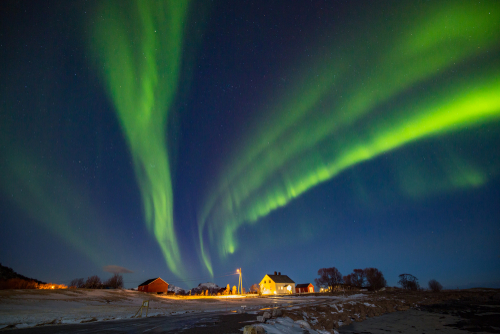A Solar Storm Could Give the U.S. a Rare Glimpse of the Northern Lights Tomorrow
On Monday, NASA announced a category G1 geomagnetic storm would hit earth sometime between March 14 and 15. While the idea of a massive solar storm hurtling toward Earth at thousands of miles per second sounds scary, there’s really no need to worry. In fact, all you need to be concerned about is if you’ll be in prime location for the light show Mother Nature is about to put on.
Though the name sounds intimidating, a geomagnetic storm really is no big deal and happens hundreds of times a year. When the sun emits superheated plasma, otherwise known as a coronal mass ejection (CME), it can trigger a geomagnetic storm. That storm then can cause solar flares, a release of magnetic energy, and cause the Earth’s aurora borealis to light up, bringing Northern Lights chasers joy all over the globe.
And the impending solar storm may bring those Northern Lights much farther south than usual. According to NASA, the lights could reach as far south as Maine and northern Michigan.
If you’re hoping to catch a glimpse of the aurora borealis in the northern U.S. over the next few days, you’ll want to travel out of a city and as far away from lights as possible. Even in total darkness the auroras could be difficult to spot, but a once-in-a-lifetime show may be worth the trouble.
And if you don’t catch the show this time around, there are still plenty of other places around the country where you could see the Northern Lights on display. From Alaska to Pennsylvania there are a ton of places that are often prime spots for viewing. All you have to do is start planning your trip now.

